Contact Info
Department of Applied Mathematics
University of Waterloo
Waterloo, Ontario
Canada N2L 3G1
Phone: 519-888-4567, ext. 32700
Fax: 519-746-4319
PDF files require Adobe Acrobat Reader
The memory integral models discussed, while simple, can be used in a laboratory setting to classify the material properties. This is especially useful for the wide variety of polymer based materials which, like silly putty, behave both as fluids and solids. Polymers, as you know, are extremely long molecules, usually made up of repetitions of a basic subuint. Their description at the molecular level is a fascinating and diverse subdiscipline of physics, chemistry and engineering.
For our purposes we merely note that on a macroscopic level they may show counterintuitive behaviour that needs to be explored both for its inherent interest and because it may affect efficient production of various end-products.
The simplest deformation is shear deformation as in the following diagram:
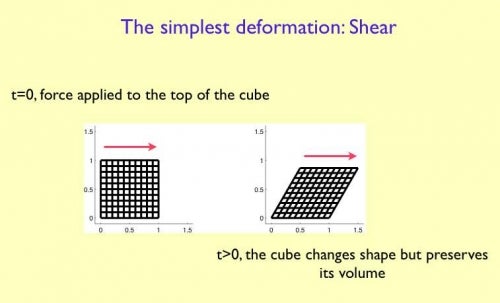
In a lab this can be accomplished in a lab setting by fixing a sample of the material we wish to investigate to two parallel plates. The shear results when the top plate is moved to the right while the bottom plate is fixed:
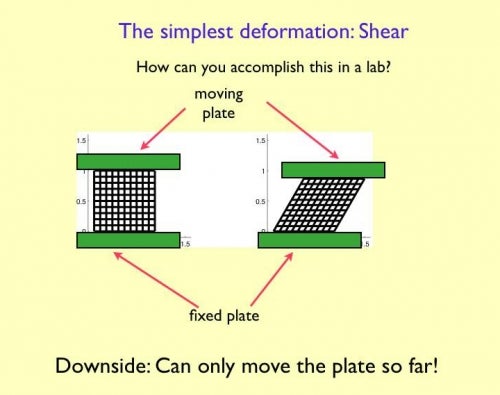
The piece of equipment to perform tests in this configuration is called a parallel plate rheometer. Though the one we show as an example uses vertical plates, so the shear diagram needs to be modified:
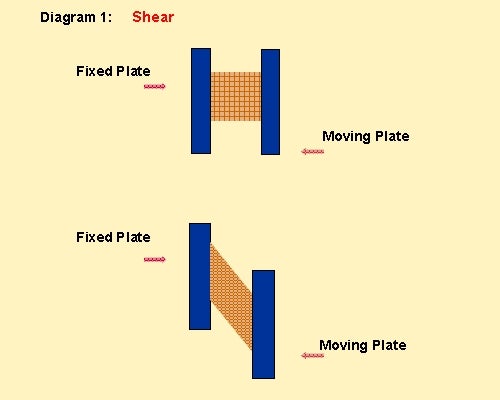
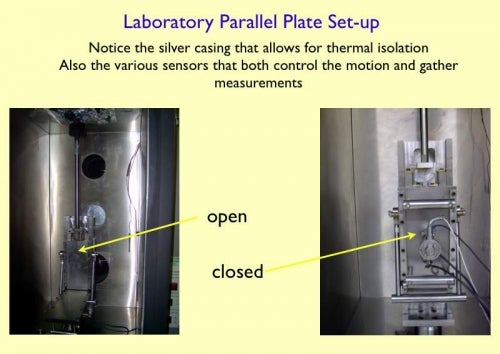
The parallel plate rheometer is widely used but it does have the restriction that we can only move the moving plate so far (this is the sort of thing a mathematical problem could ignore, but a laboratory technician cannot). To get very large shears we use a cylindrical geometry so that a small cylindrical sample is affixed to two plates. The bottom plate is fixed while the top one is turned so that a TORSIONAL deformation results:
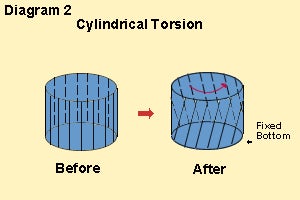 There is no reason to keep the shear deformation small since we can just keep turning the upper plate to wind the material around itself (of course a real material may break at some point):
There is no reason to keep the shear deformation small since we can just keep turning the upper plate to wind the material around itself (of course a real material may break at some point):
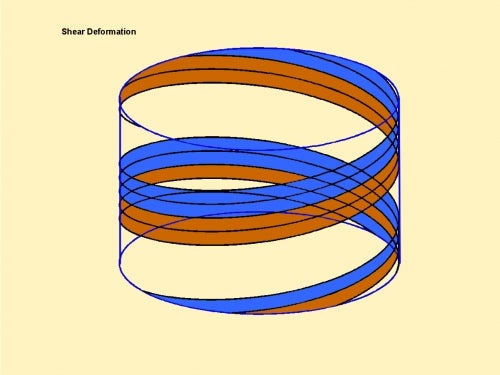
In the laboratory a torsional parallel plate rheometer looks like this:
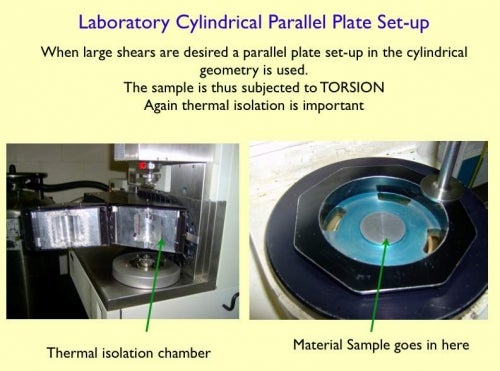
In all cases it may be necessary to keep the material sample thermally isolated from the lab environment (say you wanted to test steel in its molten state). Indeed the rheometers shown appear to have much more of their bulk dominated by mechanisms to maintain thermal isolation. This is a bit of a mirage as a rheometer depends vitally on a fine balance of small parts that are not visible to the naked eye.
Contact Info
Department of Applied Mathematics
University of Waterloo
Waterloo, Ontario
Canada N2L 3G1
Phone: 519-888-4567, ext. 32700
Fax: 519-746-4319
PDF files require Adobe Acrobat Reader
The University of Waterloo acknowledges that much of our work takes place on the traditional territory of the Neutral, Anishinaabeg and Haudenosaunee peoples. Our main campus is situated on the Haldimand Tract, the land granted to the Six Nations that includes six miles on each side of the Grand River. Our active work toward reconciliation takes place across our campuses through research, learning, teaching, and community building, and is co-ordinated within the Office of Indigenous Relations.